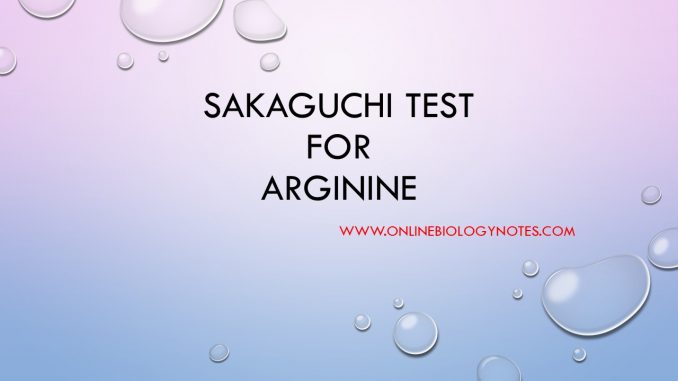
Sakaguchi test: Objective, Principle, Reagents, Procedure and Result
Objective:
- to detect amino acid gauanidium group [R-NH-C= (NH2)2+-NH2]. i.e arginine
Principle of Sakaguchi test:
This test is specific for arginine because this reaction is given by guanidinium compound. The arginine reacts with α – napththol and an oxidizing agent such as bromine water or sodium hypochlorite/sodium hypobromite to give a red colored product. The other guanidinium containing compounds other than amino acid also give this reaction.
Reagents:
- test solution: 1 % arginine, 1 % glycine, 5 % egg white (albumin)
- 1 % α naphthol in alcohol
- Sodium hypochlorite
- 1 % urea solution
- Dry test tubes
- Pipettes
Procedure of Sakaguchi test
- Take 1ml test solution in dry test tube.
- Similarly, take 1ml distilled water in another test tube as control.
- Add 2 drops of α naphthol and mix well.
- Now add 2ml sodium hypochlorite to all test tubes.
- Immediately add 1ml of urea solution to establish the red complex formed.
Result interpretation:
- Positive sakaguchi test: Red color ( Arginine)
- Negative sakaguchi test: no red color ( glycine, albumin)
